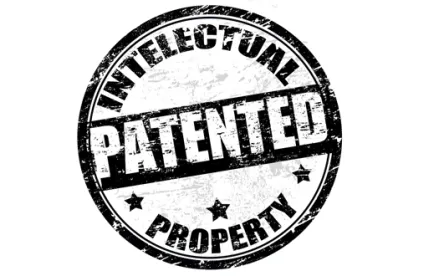In a procedurally complicated case involving allegations of both utility and design patent infringement, the US Court of Appeals for the Federal Circuit found that a district court’s piecemeal approach to a design patent infringement analysis was erroneous for considering ornamental features in isolation, especially on summary judgment. Columbia Sportswear North America, Inc. v. Seirus Innovative Accessories, Inc., Case Nos. 18-1329, -1331, -1728 (Fed. Cir. Nov. 13, 2019) (Lourie, J).
Columbia owns a utility patent relating to heat reflective elements used in cold weather and camping gear, and a design patent covering an ornamental design of the heat reflective material. Columbia filed a complaint against Seirus in the US District Court for the District of Oregon asserting infringement of both patents. The district court granted summary judgment that Seirus’s products infringed the design patent, finding that a consumer would be hard-pressed to notice the differences between Columbia’s patented design and Seirus’s accused product, and characterizing the presence of Seirus’s logo as a minor difference. The district court set a jury trial to determine liability for the utility patent and damages for the utility and design patent. Before trial, the case was transferred to the Southern District of California. At trial, the jury awarded Columbia $3 million in damages for the design patent infringement. The jury also determined that Columbia’s utility patent claims were invalid as being anticipated and obvious. Columbia appealed the venue transfer and the jury verdict of invalidity of the utility patent. Seirus cross-appealed the summary judgment of the design patent infringement.
Addressing the utility patent, the Federal Circuit declined to consider Columbia’s challenges to the anticipation finding, stating that the jury independently and correctly found the patent to be invalid for obviousness. Columbia also asserted that Seirus failed to submit “competent expert testimony” to support the jury’s obviousness finding, arguing that the case involved a technical area beyond the training and education of most jurors. The Court disagreed, concluding that the technology here—coated materials for cold weather and outdoor products—is “easily understandable without the need for expert explanatory testimony.”
Columbia further argued that it was entitled to a new trial because:
- The district court declined to instruct the jury with Columbia’s proposed instructions on anticipatory ranges.
- Seirus’s expert falsely testified to the embodiments taught by one of the prior art references.
The Court concluded that, since the jury correctly found the claims to be obvious, any error in anticipatory instructions were harmless. Further, the Court found that the false expert testimony did not warrant a new trial since the jury could have easily verified any representations about the reference and Columbia had ample opportunity to cross-examine the expert.
Turning to the design patent, the Federal Circuit reversed the district court’s infringement decision, finding that there were jury-triable facts. The Court relied on its 1993 decision in L.A. Gear v. Thom McAn Shoe to note that while design infringement is not avoided “by labelling” with a logo, L.A. Gear does not prohibit a fact finder from considering “an ornamental logo, its placement, and its appearance as one among other potential differences between a patented design and an accused one.” The Court concluded that the district court erred in ignoring Seirus’s logo placement on the products in its infringement analysis and that the district court’s “piecemeal approach” in considering similarities of ornamental features in isolation was at odds with the law requiring a factfinder to analyze similarities in the overall design as a whole.
Turning to venue, the Federal Circuit noted that Seirus initially contested venue by relying on the Federal Circuit’s 1990 decision in VE Holding v. Johnson to argue that it was not subject to personal jurisdiction in Oregon. The district court declined to dismiss or transfer, finding that it had personal jurisdiction over Seirus. After the Supreme Court decided TC Heartland v. Kraft Foods (IP Update, Vol. 20, No. 5), overruling VE Holding, Seirus renewed its motion to dismiss or transfer the case to the Southern District of California.
The Federal Circuit found that the district court did not abuse its discretion in excusing Seirus’s conduct-based waiver of its venue defense based on an intervening change in law. Accordingly, the Federal Circuit affirmed the district court’s judgment as to the utility patent and remanded for further proceedings to the Southern District of California as to the design patent.



 />i
/>i

